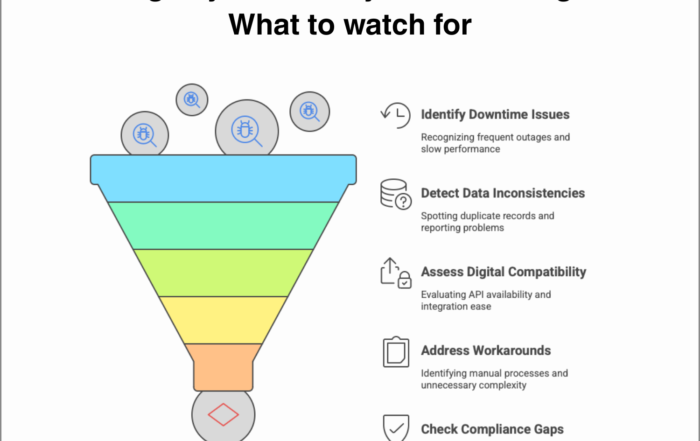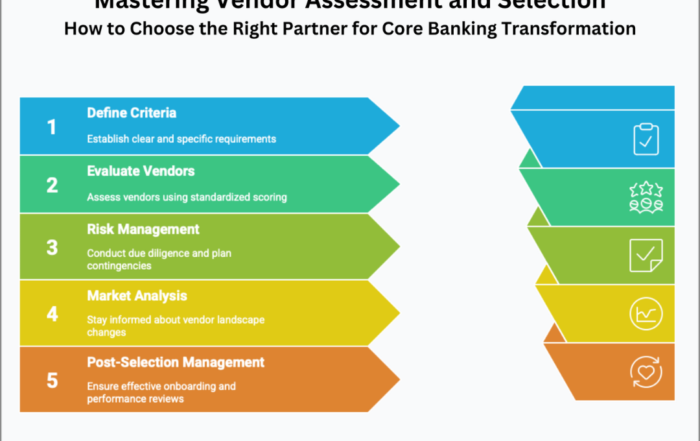
Successfully transitioning to modernized core banking platforms with strategic planning, phased rollouts, and robust support to ensure seamless service continuity and enhanced customer experience.
Transitioning mission-critical core banking platforms is a high-stakes endeavor that demands meticulous planning and execution to minimize business disruptions. Customers expect continuity of service, and regulators closely monitor technology risks during periods of significant change. While the promise of migrating to a modernized core solution is exhilarating, the transition process itself can feel precarious given the inescapable dependency on legacy system data, inputs, and outputs.
To ensure a smooth transition, banks must proactively address the challenges that arise during these transition states:
1. Data gaps between legacy and modern platforms can distort reporting.
2. Transaction errors across processing engines may lead to corrections.
3. User confusion resulting from workflow changes can cause productivity losses.
4. System defects that escape testing may require urgent fixes.
2. Operational buffers: Temporarily overstaff key functions to handle volume spikes or exceptions requiring manual intervention.
3. New system chaperones: Embed power user mentors alongside teammates to support adoption of the new solution.
4. Enhanced monitoring: Boost situational awareness capabilities to detect processing anomalies or performance lags.
5. Quick response units: Assemble SWAT teams to rapidly troubleshoot emergent transitional defects.
6. Change management rigor: Keep stakeholders, especially frontline employees, informed throughout the stress of cutover periods.
2. Proactive outreach: Notify users of pending upgrades, emphasizing continuity.
3. Self-service tools: Provide online tutorials and chatbots to answer common transition questions for DIY support.
4. Tracking feedback queues: Monitor complaint escalations, social media feeds, and app reviews flagging experience gaps.
To mitigate these transitional turbulences, savvy core modernization leaders employ proven techniques such as:
1. Phased rollouts: Transition functionality in waves, monitoring issues regionally before broad launches.
Beyond back-office considerations, core transitions shape customer perceptions, making it crucial to ensure uninterrupted service access across channels. This involves:
1. Seamless CX interfaces: Consistent functionality between old and new digital platforms post-migration.
A smooth core banking platform transition requires meticulous coordination across technology, operations, and customer experience domains, coupled with tested contingency measures for addressing inevitable hiccups. While weighing heavily on teams, properly managed transitions pave the way for modernized environments that position organizations for future growth and innovation.
Found this article interesting? Check out these three related reads for more.
- Best practices for successful core banking system implementation
- Ensuring successful core banking system implementation
- Exponential technologies disrupting the banking industry
#SmoothTransitionBanking #CoreSystemMigration




